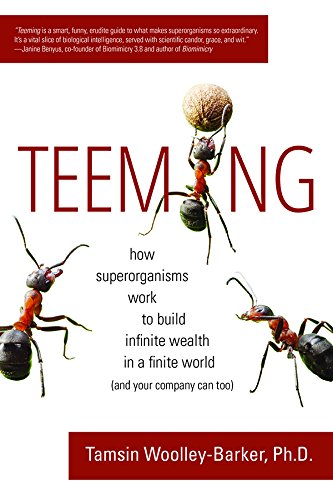book
Advances in manufacturing and processing of materials and structures
Thu, 2018/10/04 - 20:08 — nhoellerBrook Kennedy contributed to chapter 5 on “Biofabrication and Bio-Inspired Manufacturing Techniques for the Built Environment” and Jacquelyn Nagel contributed to chapter 18 on “Sustainable Manufacturing”.
I am pleased to let you know that my 10th book has been published by CRC Press. This edited and coauthored book is entitled “Advances in manufacturing and processing of materials and structures” and it contains 544 pages. The book covers the latest advances in manufacturing and processing including additive and subtractive processes and it is intended to provide a compiled resource that reviews details of the advances. 3D printing is a key development that has been incorporated into this book covering its use to produce complex parts including composites with odd shape fibers as well as tissue and body organs.
Regenerative Design and Ecosystem Biomimicry (Dr Maibritt Pedersen Zari)
Mon, 2018/06/04 - 09:27 — nhoellerThis book examines and defines the field of biomimicry for sustainable built environment design and goes on to translate ecological knowledge into practical methodologies for architectural and urban design that can proactively respond to climate change and biodiversity loss. These methods are tested and exemplified through a series of case studies of existing cities in a variety of climates. Regenerative Urban Design and Ecosystem Biomimicry will be of great interest to students, professionals and researchers of architecture, urban design, ecology, and environmental studies, as well as those interested in the interdisciplinary study of sustainability, ecology and urbanism.
Attachment includes table of contents and a discount code.
Teeming: How Superorganisms Work Together to Build Infinite Wealth on a Finite Planet
Thu, 2017/07/20 - 19:19 — nhoeller2017/08/21 uploaded PDF of TOC and Prologue (see below text)
Written by Tamsin Woolley-Barker. Also available on Amazon.ca.
An entertaining and accessible read with profound implications for the future, Teeming takes us on a journey through nature's most ancient and successful R&D labs, and gives practical prescriptions for redesigning organizations to flourish far into the future. Evolutionary biologist Woolley-Barker weaves poetic vision and deep scientific expertise to illustrate how flat, agile, and adaptive societies like ants, termites, and underground fungal networks self-organize for resilience and value.
Products That Last - product design for circular business models
Sat, 2015/01/24 - 12:30 — nhoeller
by C.A. Bakker (Author), M.C. den Hollander (Author), E. van Hinte (Author), Y. Zijlstra (Author)
PRODUCTS THAT LAST - product design for circular business models- starts where most books on product development end. From the perspective of designers and entrepreneurs once a product has been designed, produced and sold, it disappears beyond the newness horizon. Little are they aware of the opportunities that exist in the next product universe, where money is made from products in use, as well as from a product's afterlife. These opportunities clearly exist, otherwise they would not be providing an income for so many people. However, to be recognised as segments of a circle of continuous value creation, they need reframing.
PRODUCTS THAT LAST offers readers an innovative and practical methodology to unravel a product's 'afterlife' and systematically scrutinise it for new opportunities. It introduces us to business models that benefit from the opportunities offered by a much longer product life.
Biologically Inspired Design: Computational Methods and Tools
Sun, 2013/07/28 - 15:32 — Goel Goel, A. K., McAdams, D. A., & Stone, R. B. (2013). Biologically Inspired Design: Computational Methods and Tools. Berlin Heidelberg: Springer.
Goel, A. K., McAdams, D. A., & Stone, R. B. (2013). Biologically Inspired Design: Computational Methods and Tools. Berlin Heidelberg: Springer.
About this Book:
- Outlines the state of the art in bioinspired design methods and the outstanding research questions in the field thus clarifying what can be done, what can be done, and what needs to be done
- Contains contributions by a diverse set of leaders in the field that provide existing methods to conduct bio-inspired design
- Provides detailed, specific, and formal methods for how to use nature as inspiration for engineering design thus enabling the design practitioner to apply such methods to their design problems
- Includes chapter relevant URLs, examples and a range of figures an diagrams to illustrate and explain methods and their design and research applications
